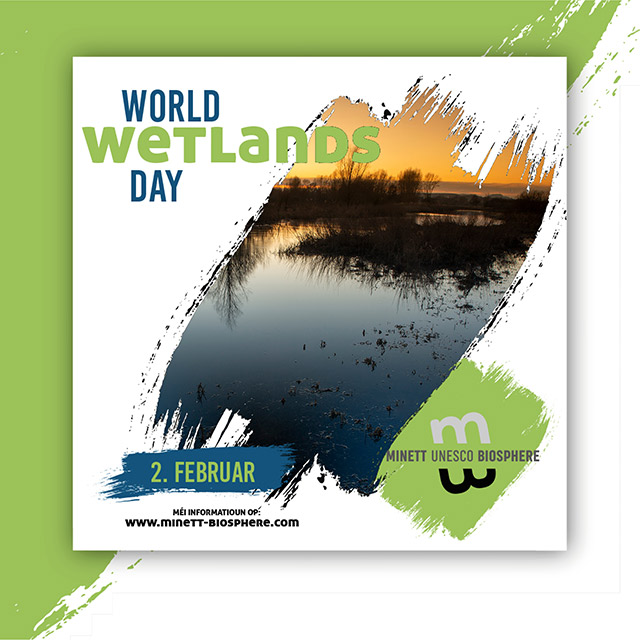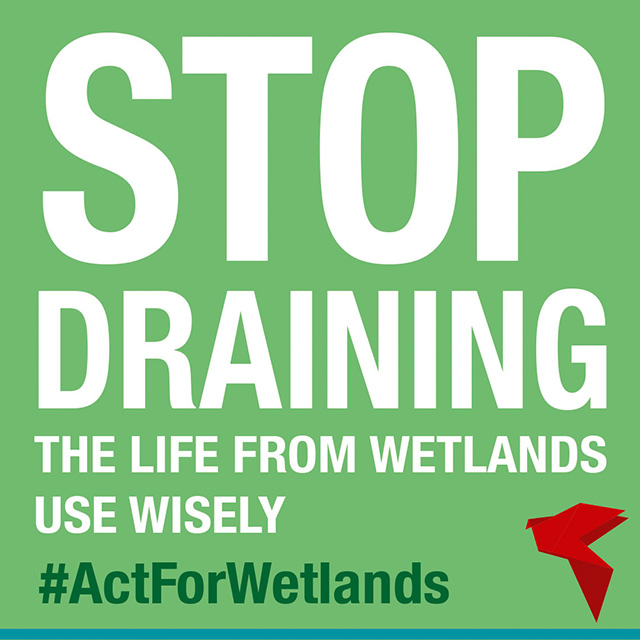Background on World Wetlands Day
What is World Wetlands Day?
World Wetlands Day is celebrated each year on 2 February to raise awareness about wetlands. This day also marks the anniversary of the Convention on Wetlands, which was adopted as an international treaty in 1971.
Why World Wetlands Day?
Nearly 90% of the world’s wetlands have been degraded since the 1700s, and we are losing wetlands three times faster than forests. Yet, wetlands are critically important ecosystems that contribute to biodiversity, climate mitigation and adaptation, freshwater availability, world economies and more.
It is urgent that we raise national and global awareness about wetlands in order to reverse their rapid loss and encourage actions to conserve and restore them. World Wetlands Day is the ideal time to increase people’s understanding of these critically important ecosystems.
A United Nations International Day
This year’s celebration of World Wetlands Day is especially significant — as on 30 August 2021 the UN General Assembly adopted a resolution that established 2 February as World Wetlands Day — inviting all 193 UN member states to observe the day, opening the door for greater global visibility for wetlands.
Who is behind World Wetlands Day?
The World Wetlands Day awareness campaign is organized by the Secretariat of the Convention on Wetlands. Contracting Parties of the Convention on Wetlands have been celebrating World Wetlands Day since 1997, when it was first established.
Urgent Need for Action
- Wetlands are disappearing three times faster than forests and are Earth’s most threatened ecosystem. In just 50 years — since 1970 — 35% of the world’s wetlands have been lost.
- Human activities that lead to loss of wetlands include drainage and infilling for agriculture and construction, pollution, overfishing and overexploitation of resources, invasive species and climate change.
- In the last five decades, 81% of inland wetland species and 36% of coastal and marine species have declined.
- Today, one in three freshwater species and 25% of all wetland species face extinction from wetland decline — including water birds, fresh water-dependent mammals, marine turtles and coral-reef-building species.
- Many threatened plants, amphibians, reptiles, birds and mammals live in wetlands. More than one-third of the threatened and endangered species in the United States live only in wetlands — and nearly half use wetlands at some point in their lives.
Wetlands and Climate Change
Climate Mitigation and Securing Net Zero Carbon Emissions
- Peatlands, mangroves and seagrasses are effective carbon sinks that naturally store carbon.
- Peatlands cover 3% of our planet yet store approximately 30% of all land-based carbon.
- Coastal wetlands sequester and store carbon up to 55 times faster than tropical rain forests.
- It is estimated that greenhouse gas emissions from drained peatlands and peatland fires are responsible for about 4% of global anthropogenic greenhouse gas emissions.
Climate Adaptation and Disaster Risk Reduction
- Wetlands help safeguard coastal communities against storm surges, hurricanes and tsunamis.
- Coastal wetlands such as saltmarshes, mangroves, seagrass beds and coral reefs act as buffers, shielding coastal communities during extreme weather events.
- Sixty percent of humanity live and work along coastlines, and wetlands shield them from flooding, property damage and loss of life.
- Coral reefs provide protection worth up to US$34,000 per hectare every year.
- Inland wetlands, such floodplains, rivers, lakes and swamps, absorb and store excess rainfall, which reduces flooding — with each acre of inland wetlands absorbing up to 1.5 million gallons of floodwater.
- Wetlands also store and release water, delaying the onset of droughts.
Wetlands and Biodiversity
- Wetlands are rich in nutrients carried by the rivers, streams and water flowing into them. This combination of nutrients, sunlight and water powers the food chain.
- Roughly, 40% of the world’s species live or breed in wetlands.
- Over 100,000 freshwater species have been identified in wetlands so far.
- Wetlands are the home to about 30% of known fish species, with 200 new freshwater species discovered each year.
Wetlands and Freshwater
- Wetlands provide most of our freshwater.
- Only 2.5% of water on earth is freshwater, mostly stored in glaciers, snowcaps or underground aquifers. Less than 1% is usable, 0,3% is found in wetlands such as rivers and lakes.
- Wetlands are commonly referred to as the Earth’s kidneys because they function as natural filters, absorbing pesticides and chemicals and removing harmful waste from water.
- Wetlands’ silt-rich soil and abundant plants act as filters against harmful toxins, agricultural pesticides and industrial waste, naturally improving water quality.
Wetlands, Sustainable Development and Well-being
- Wetlands provide ecosystem services worth US$47 trillion annually.
- Wetlands provide livelihoods for one billion people — from fishing, aquaculture and tourism, to providing valuable goods to gather and process, often benefiting the poor.
- They help feed the world — giving us much of the fish we eat, rice for 3.5 billion people, water for food production, and raw materials for lifesaving medicines.
- Wetlands support human well-being by offering magnificent beauty and opportunities for recreation, cultural engagement and the mental health benefits tied to interacting with nature.
- Wetlands contribute directly or indirectly to 75 Sustainable Development Goal (SDG) indicators.
- Conserving and restoring mangroves globally could yield a return on investment of US$3.7 billion per year, based on their carbon values alone.






